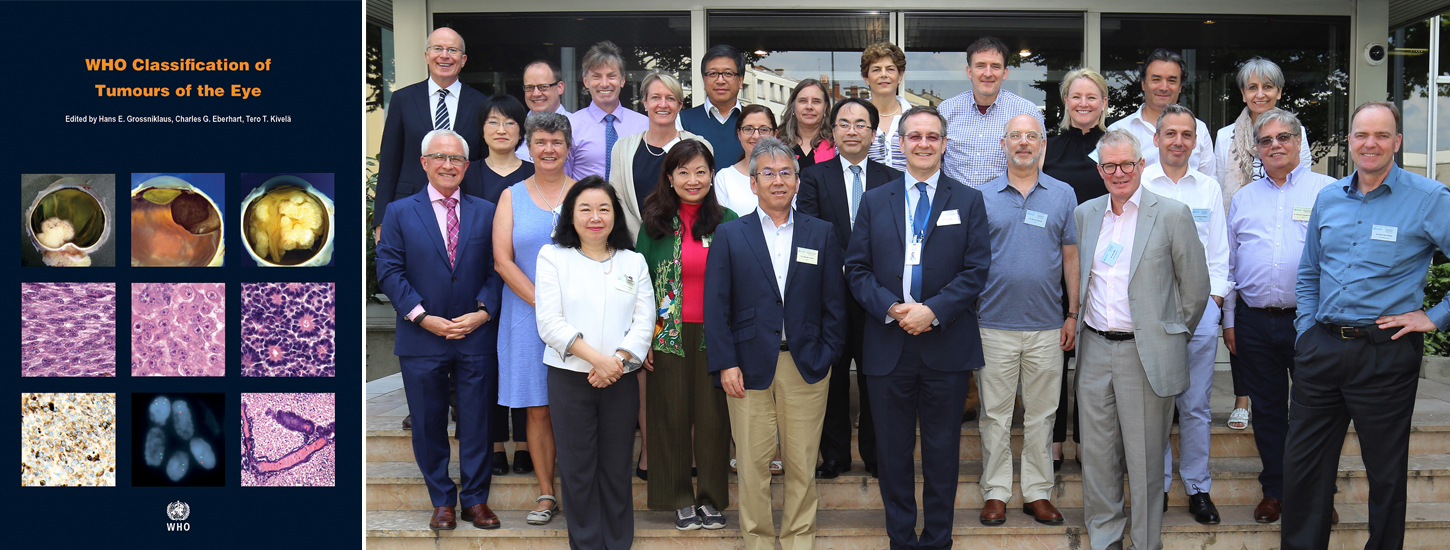The World Health Organization Classification of Tumours group

Bonjour from France!
Author

Dr. Valerie A. White Pathologist, WHO/IARC Classification of Tumours Group International Agency for Research on Cancer World Health Organization Lyon, France
In the summer of 2017, Dr. Ian Cree, a British pathologist, whom I had known as an acquaintance for some time, emailed to say that he had just accepted what he thought was the best pathology job in the world. He had been newly appointed as the head of the World Health Organization Classification of Tumours group, the team that produces the ‘Blue Books’, at the International Agency for Research on Cancer in Lyon, France. Now I can say that I have the second best pathology job in the world as Ian’s deputy pathologist!
Now I can say that I have the second best pathology job in the world as Ian’s deputy pathologist!
The WHO Classification of Tumours is used by pathologists world-wide as the standard by which tumours are diagnosed. However, it is used not just by pathologists, but also by the greater oncology community, including cancer registrars, epidemiologists, researchers and students in many disciplines, in both low and high-income countries. With the retirement of the previous editor, Dr. Hiroko Ohgaki, and the appointment of Ian as the new editor, the Blue Books have undergone a change in their process of production to make them more evidence-based as they move forward, and to bring them to the public via a new website, which will be launched later this year. The series needs to retain and expand its usefulness for all of these audiences, while adapting to the rapid rate of progress in knowledge of cancer pathogenesis, classification and prediction. Previously, a series of 12 volumes corresponding to the different organ systems, with the new 5th series, it will expand to 15 books with the addition of volumes on pediatric, neuroendocrine and hereditary tumours.
Editorial Board
Ian began his program of change by appointing an editorial board of 20 senior pathologists nominated by pathology societies from around the world who participate in all editorial meetings. With each book, approximately 15 additional editors are appointed who are experts in the field of the book under production and they select about 180 authors. While some of these editors worked on the fourth series books, the plan is for both content editors and authors to be chosen based on their record of recent publication in the field under consideration. There are two editorial board meetings per year and at each one, the content of the current book is discussed and finalized and the classification for the next book is presented and authors selected. With the move towards developing a better evidence base for the classification, we have also appointed a professional systematic reviewer, who will perform, as well as develop protocols for, systematic reviews of significant pathologic issues that affect the classification of tumours, as well as prognostic and predictive factors.
My Role
Luckily for me, when I joined the team in September 2018, the last book in the 4th series on Tumours of the Eye was in process and I was able to jump right in and help out with the final selection of figures, tweaks to editing of the text and providing assistance in the layout. Now we have almost finished editing the first book of the 5th series on Tumours of the Digestive System. Each section of a chapter has a different series of headings from the previous edition and the layout of the book has been updated. My role consists of reading the content received from authors for its pathologic clarity and consistency, ensuring that all necessary figures are available and of sufficient quality, editing the figure legends and checking the tables, before the material goes for technical editing. I work in a team that also includes senior pathologists on sabbatical from Sri Lanka and Japan, a database developer, layout editor, technical editor and several program assistants who keep everyone organized!
The Future Plan
The proposed website is now in the development stage and its launch is planned for September 2019 at the European Congress of Pathology in Nice, France. Initially the website will contain the recent 4th series books and the first 5th series book on Digestive Tumours with their contained images. The future plan is to rely heavily on whole slide images, which we have been collecting from authors and contributors to provide more examples of tumour pathology, including subtypes and patterns that cannot be contained in a book of fixed length. The website will also allow incorporation of more molecular data as this becomes increasingly important in tumour classification. Various models of access to the website are planned for the needs of different users.

